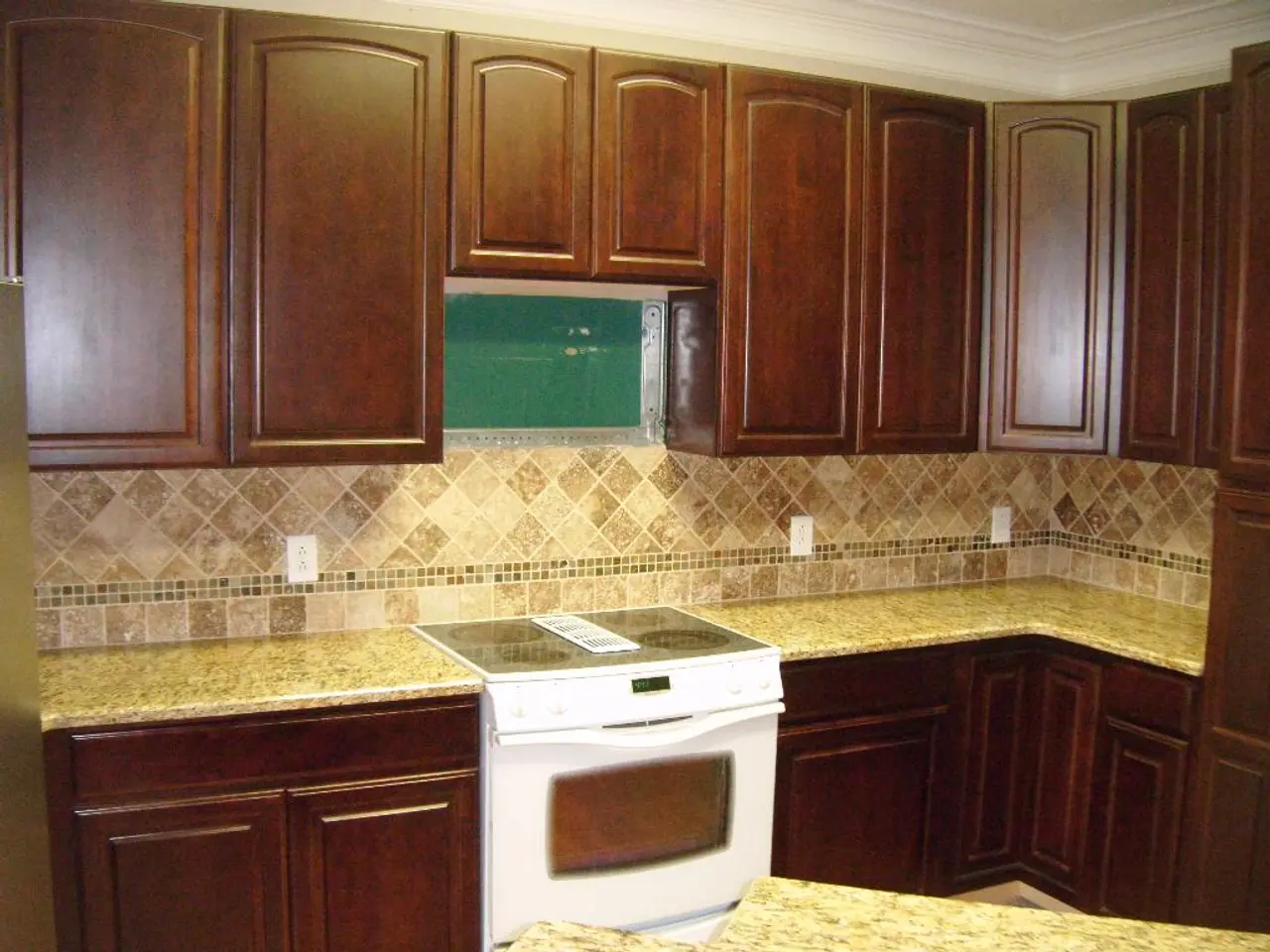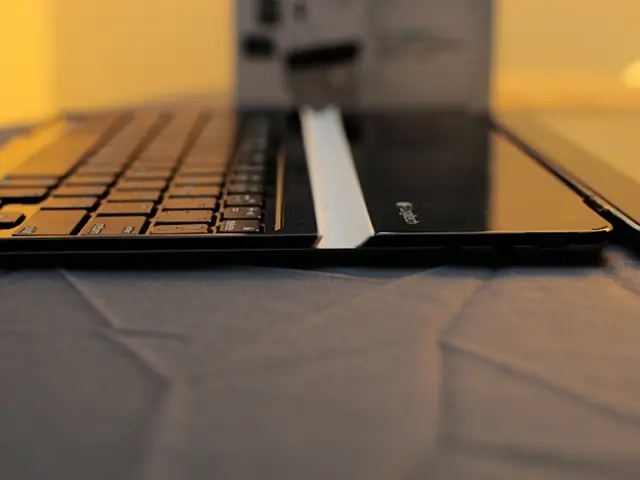Under Kitchen Cabinets: A Must for Flooring – Expert Opinions Explored
When it comes to installing kitchen flooring, the age-old question is whether to install it under or over the cabinets. In general, it's recommended to install kitchen flooring under the cabinets for better durability and flexibility. However, there are situations when it might not be necessary or advised.
The Benefits of Flooring Under Cabinets
Flooring under cabinets provides a continuous, even surface, which helps prevent gaps, shifting, and uneven wear, especially with floating or click-lock flooring types like vinyl or laminate. This smooth surface makes future renovations easier as cabinets can be replaced or moved without needing to redo the flooring. Additionally, it can improve insulation and moisture protection beneath cabinets.
When to Skip Flooring Under Cabinets
In some cases, it might not be advisable to install flooring under cabinets. For instance, if you have expensive or delicate flooring (like hardwood) and plan to replace cabinetry later, you might choose to avoid putting flooring under cabinets to reduce costs and avoid potential damage during installation.
In situations where the subfloor under cabinets is stable and well-sealed, and cabinets are firmly fixed, some installers advise cutting flooring to fit around cabinets to save material and budget because it will be hidden. However, certain flooring types that are sensitive to moisture (like laminate) may not be ideal to extend under sinks or cabinets if there is a risk of leakage and damage.
Weighing the Pros and Cons
| Pros | Cons | |---------------------------------------------|-----------------------------------------------------| | Provides a continuous surface, preventing gaps | Adds to material and installation costs | | Easier future cabinet remodeling without redoing floors | May be unnecessary if cabinets are fixed permanently | | Helps with moisture barrier and insulation | Sensitive floors may be damaged if leaks occur under cabinets | | Prevents debris accumulation under cabinets | May complicate inspection or repairs under cabinets |
Flooring Types to Avoid Placing Under Cabinets
Certain flooring types should be avoided under cabinets due to their vulnerabilities. For example, laminate flooring is not waterproof and can swell if exposed to moisture, so it's best to avoid placing it where potential leaks occur under sinks. Engineered hardwood or solid hardwood may be more prone to damage or complicated refinishing if covered permanently under cabinets, plus they have a higher initial cost. Some vinyl types release VOCs and are harder to repair if damaged, making under-cabinet placement more challenging for repairs.
Alternative Budget Uses
If you decide to skip flooring under cabinets to save on costs, consider investing in better underlayment for soundproofing and moisture protection under visible floor areas. You could also allocate the saved budget to higher-quality flooring in the open kitchen parts with more foot traffic and visibility. Upgrading kitchen fixtures, backsplashes, or cabinet hardware can also improve aesthetics and functionality. Lastly, ensure professional flooring installation to extend durability and reduce repair costs.
In conclusion, installing kitchen flooring under cabinets is usually the best practice for durability and future flexibility, especially with water-resistant materials like vinyl. However, if budget constraints or specific flooring vulnerabilities exist, it can be omitted under cabinets to save cost, as long as the risks are acknowledged and other quality upgrades are prioritized.
Expert Opinions
Ryan Meagher, Business Development Manager at BVM Contracting, a residential construction company, recommends not installing luxury vinyl plank and other floating flooring systems under kitchen cabinets. Magda Callery, an experienced interior designer in the UK, suggests that installing flooring before kitchen cabinets makes fewer cuts necessary and future renovations easier. Both professionals offer valuable insights into the world of kitchen flooring installation.
For more guidance on wood flooring, kitchen flooring ideas, and tile ideas for kitchen floors, check out our guides (Callery, implied).
- With floating or click-lock flooring types like vinyl or laminate, installing kitchen flooring under cabinets provides a continuous, even surface that helps prevent gaps, shifting, and uneven wear.
- When cabinets can be replaced or moved without needing to redo the flooring, having a smooth surface for flooring under cabinets can make future renovations easier.
- In some instances, it might be unnecessary to install flooring under cabinets if the subfloor under them is stable and well-sealed, and cabinets are firmly fixed.
- In situations where expensive or delicate flooring like hardwood is planned to be replaced later, avoiding putting flooring under cabinets can help reduce costs and avoid potential damage during installation.
- Some installers advise cutting flooring to fit around cabinets to save material and budget because it will be hidden, but certain flooring types like laminate may not be ideal to extend under sinks or cabinets if there's a risk of leakage and damage.
- If budget constraints or specific flooring vulnerabilities exist, it can be beneficial to skip flooring under cabinets to save cost, as long as the risks are acknowledged and other quality upgrades like enhanced underlayment, higher-quality flooring, or renovating kitchen fixtures are prioritized.
- To extend durability and reduce repair costs, ensure professional flooring installation to optimize the benefits of under-cabinet flooring when it's installed, or when alternative solutions are employed in your home-and-garden design.








